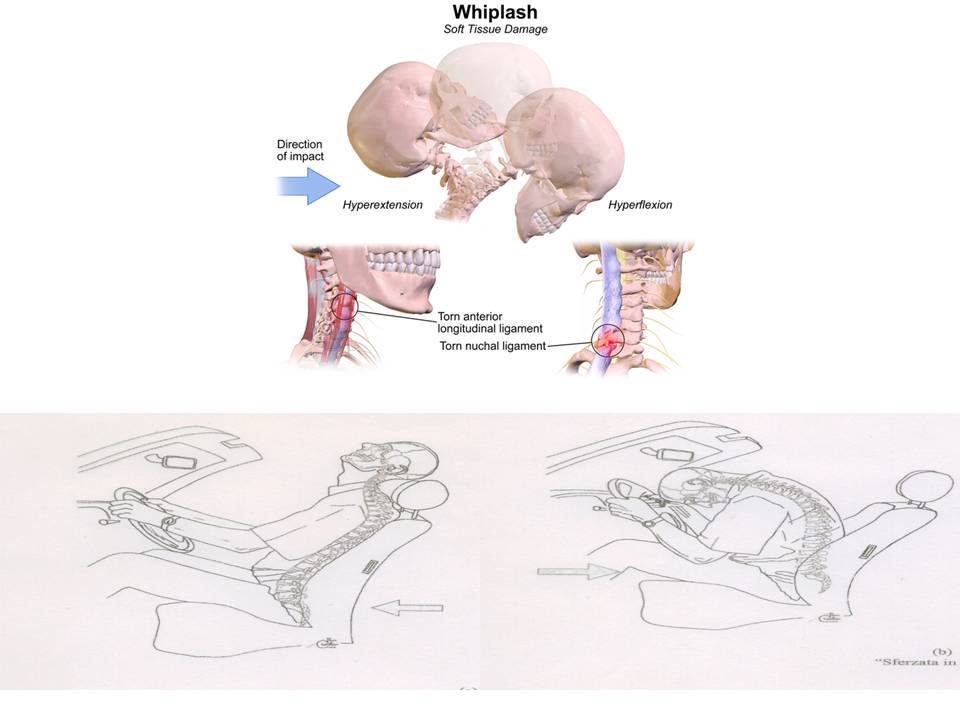Whiplash is an unexpected acceleration- deceleration mechanism of the cervical spine due to a variation in speed towards one direction with a sudden change in the opposite direction.
The WHO (World Health Organization) discerns the lesion mechanism Whiplashfrom the injuries of the event Whiplash injury (reversal of the cervical spine, injury of the anterior longitudinal ligament, etc.) and the secondary symptoms of the trauma Whiplash associated disorders (general pain in the body, nausea, vomiting, headache, dizziness and loss of balance, mood disorders, fatigue etc.)
Car crash is the classic example of whiplash.
During this unexpected event, the body hasn’t the chance of defending itself and the lack of reaction causes a traumatic wave which goes through the body. It begins from the pelvis and spreads throughout the spine and through all the tissue and organs. The first reactions involving deeply the body are contractions and stiffness of the structures, associated with emotional reactions such as fear, anxiety, panic.
Whiplash affects the person as a whole, disturbing the homeostasis.
The Ostheopath will work on the whole body, evaluating patient symptoms, making a physical exam and focusing on all the structures that might be affected (such as pelvis, sacrum, abdomen, skull), not only on the cervical spine.
The treatment will aim at ensuring that the person finds is balance.
